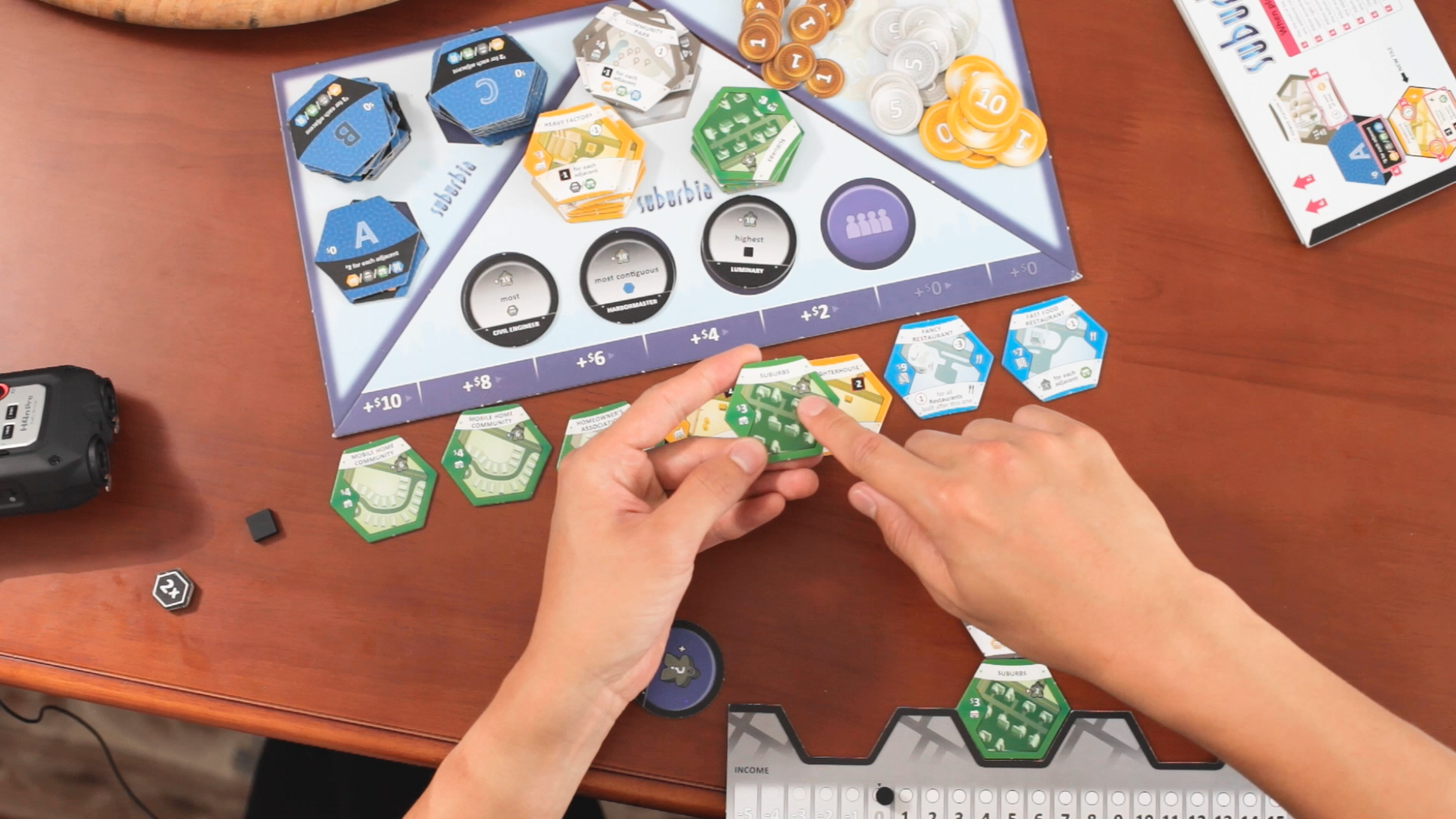Suburbia Review
Build a distinct yet streamlined city, with complicated strategies.
A Euro-styled city building game for 2-4 players, that should really only be played at 3 players. Constantly add to your city, trying to have the most people. About 30-45 minutes.
Video published August 13th, 2019

Cities will take on a different look every game!

All sorts of creative ways to increase your town's population.

The suburbs, local parks, and factories are just the beginning.
Overview & How to Play
Just get the most people in your city.
That’s it for Suburbia. Have the most ‘population’ in your city by game end. There are 2 main ways to increase this, by either buying tiles that increase it right away, or by buying tiles that increase something called ‘reputation’, which slowly increases your city’s population turn upon turn.
However, to buy anything in your city, you need money! The main way to get this cash is to have a higher ‘income’, which you will also get at the end of your turn. Suburbia ends up being a nice balancing act between ‘income’ and ‘reputation’, where getting one tends to decrease the other.
As the game progresses, tiles will become stronger, going from the A stack, to B, to eventually C, allowing players to eventually buy airports, casinos, and even universities.
At the end of the game, players check population from bonus sources, like public objectives, or even their secret objectives they got at game beginning. Then see who wins!
Pros
We have to bless the income and population growth reduction mechanic off the bat. See, every time players move up on population, they can pass a red bar on the square scoreboard (to right). If they do so, they lose an ‘income’ AND ‘reputation’ immediately. This is great for slowing down players who jump ahead early, leading to a lot of different strategies besides trying to cheese the game early. This simple mechanic of slowing players’ growth, the larger their city becomes, is also incredibly thematic.
The variety of tiles will let you really plan your city to your liking: with tiles having tons of information that feel unique and are easy to read. They all match specific categories of colors, and combine with each other in great and seemingly unexpected ways. In new playthroughs, you’ll brainstorm new ways to use them.
If you’re outta cash too, there’s a neat lake mechanic to get a quick influx of cash, while also permanently affecting your city with a lake. Plus, grabbing this lake could deny someone else’s much wanted tile, as you take a tile from the center for free, and flip it over to become a lake.
The city building aura of Suburbia is just undeniably good. The city building borders on epic, which is remarkable given this game is 30-60 minutes. There’s a smooth pace as new tiles get revealed to buy, money comes and goes, and cities slowly expand in different directions. You can control your immigration and emigration, housing supply, entertainment, schooling, shopping, waste disposal, transportation, and more.
Cons & Nitpicks
However, the components are just underwhelming, with the boards, including the scoreboard being not very durable, and sometimes rough on the eyes, albeit functional. Taking all the tiles in and out of plastic bags especially bogs down setup, so some type of additional storage solution is recommended.
There are also secret goal tiles that are quite imbalanced in point payouts, relative to how easy they are to achieve. For example, it is far easier to have the least amount of money, compared to having the most amount of airports, and that difficulty is not reflected at all.
A warning to newcomers as well: there is such a strong diversity in tiles that a newcomer practically has zero chance of playing well against experienced players until their 3rd of 4th game. There are just so many abilities that potentially combo off each other that newcomers would not know about from the get-go.











